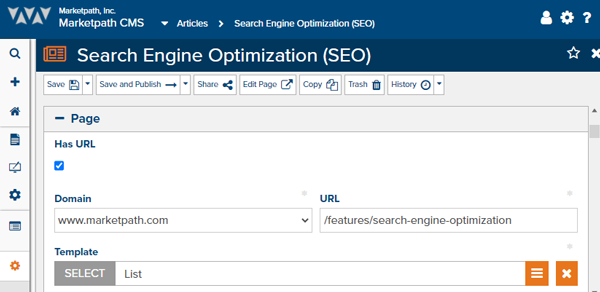
SEO best practices indicate that structure and keywords in the file path of a URL are beneficial to ranking and visitors.
A page’s URL is derived from a single text field. In this field, you can define the folder or path of the page and include keywords.

Effortlessly override the page name to convey to visitors what the content of the page is about.
Google has stated that meta descriptions are not included in their ranking considerations, but this content area provides full flexibility to the editor to influence click-through rates.
Preview the page's Title Tag and Meta Description before publishing on both desktop and mobile browsers. Built-in length indicators help ensure Titles and Descriptions are within the recommended character widths.
![]()
Important for SEO, usability, and accessibility, editors have the freedom to configure all headings on the page, including the H1.
Inserting an image is as easy as three clicks, and adding alt text is one option in the process. Whether you prefer to do it in the dialogs of inserting an image or in source code, you have the ability to improve SEO and accessibility.
Content on each page should be unique, which makes it more linkable. With the WYSIWYG editor, easily add internal or external links to influence rankings.

Duplicate content within a website can negatively impact SEO. Marketpath CMS features a link dialog to help you quickly identify the version of the page you want to show in SERPs.
As they’re also known, Robots Meta Directives provide search engine crawlers instructions on how to crawl and index the page. This is a text field where editors can set the preferences.
Doing more than benefiting SEO, redirects can be configured for each page or in the Redirect area of the CMS.